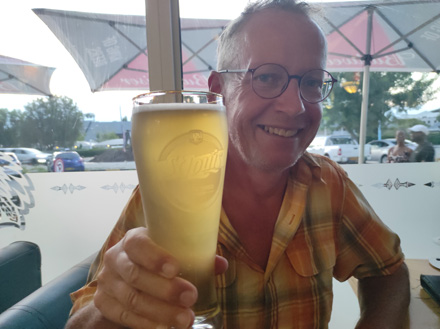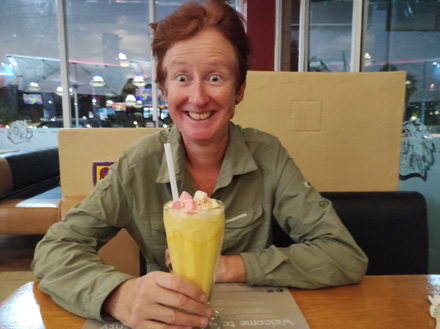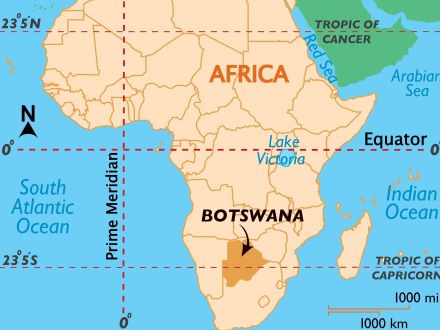
Cycling Botswana’s Elephant Highway is one of Africa’s ultimate adventures.
Jackalas 1 (Zimbabwean border) – Francistown – Nata – Pandamatenga – Kasane – Kazungula (Zambian border)
594 km cycled
Watch the video!
Our detour into Botswana was prompted by elephants. That’s right – elephants! With Botswana having the highest concentration of elephants in the world, we were sure to have an encounter or two.
Border crossing
The border crossing was an efficient, hassle free experience and we both got a 30-day tourist visa free of charge, with extension possibilities if need be. Before leaving the border area we passed through a foot and mouth control zone where we had to disinfect our tyres and sandals. There was another control zone 50 km down the track. 80% of the rural population are involved in agriculture, and Botswana beef is exported mainly to the EU.

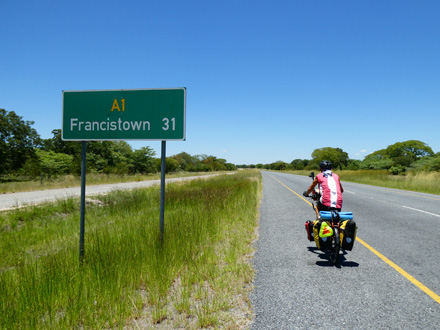
The road to Francistown
What awaited us in Botswana on the A1 was a proper runway all the way into Francistown, some 80km away. It was one of those brand-new roads with a generous hard shoulder, where you could let your mind wander and not have to worry about traffic.
Francistown is the go-to shopping town for Zimbabwe residents and we can see why. It is one big shopping mall after the other, and the variety of stock in the supermarkets was reminiscent of what we had in South Africa. We stocked up on all sorts of goodies for the road ahead.
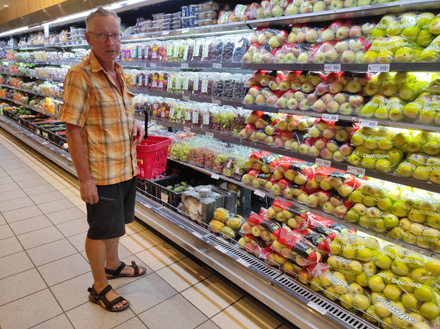
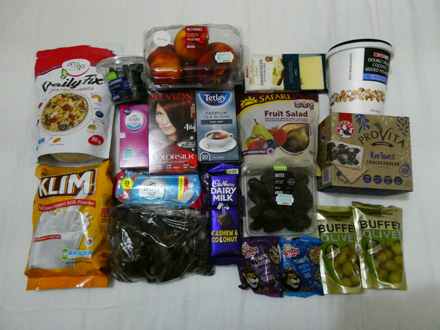
The Botswana story
With a population of just two million, about half of which are ex-pats, it’s not surprising that there are vast stretches without villages. When we did stop for a drink, the locals always came for a friendly chat and showed genuine interest in our trip.
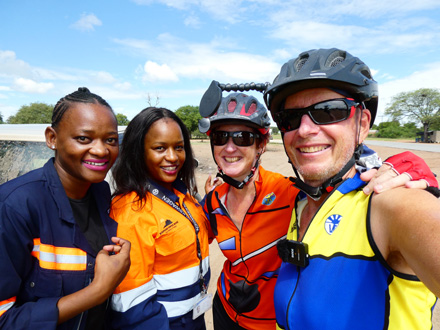
While Botswana goes down in the textbooks as the African success story, the locals were quick to point out the present reality. Botswana secured independence from the British in 1966 after 80 years as a protectorate. Back then it was one of the poorest and least developed countries in the world. Lo and behold, one year later diamonds were discovered and rather than pocket the spoils for themselves, the government cleverly invested into health, education and infrastructure, so that everyone would benefit. So much so, the ruling party (Botswana Democratic Party) were re-elected year after year and the country flourished. Diamonds still account for 50% of the country’s revenue.
It appears that the most recent president and vice president are going down the slippery slope of corruption, the general public is being neglected and in many cases finding it hard to make ends meet. Villagers can’t afford to pay for education, which leaves them with limited work opportunities. On the other hand, trained and highly educated Zimbabweans have discovered that they can have a much better life in Botswana than at home and many have emigrated across the border. Incidentally, according to the World Happiness Report 2022, both Botswana and Zimbabwe rank among the lowest five countries in the world.
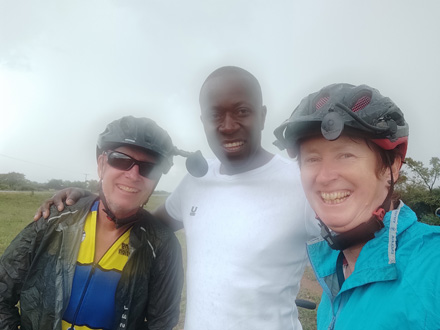
The lap of luxury
Once we hit Nata, Kurt had a little trick up his sleeve. i.e., a little pampering at the Nata Lodge. Wow! What a place! A real Out of Africa joint with an outdoor shower, generous terrace and a bathtub no less in the main room. Darina certainly approved… and even managed to secure a tummy bug to extend the stay!
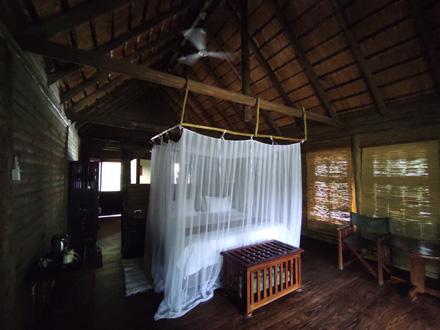
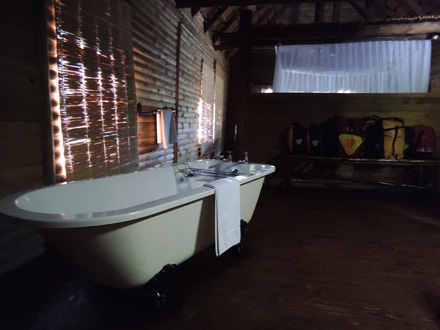
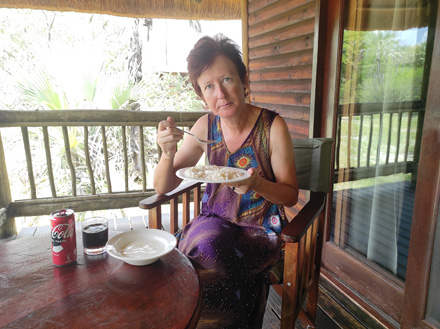
Where elephants rule!
The Elephant Highway is by no means a misnomer. The C33 between Nata and Kasane appears like a normal Botswana road. Dead straight. Flat as a pancake. The only difference here is that elephants roam freely and have the right of way!
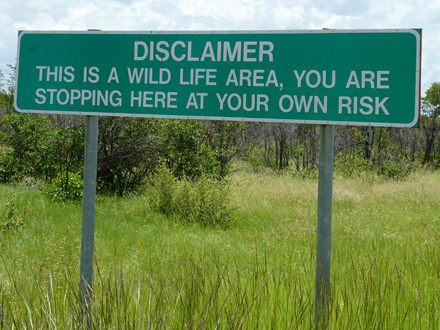
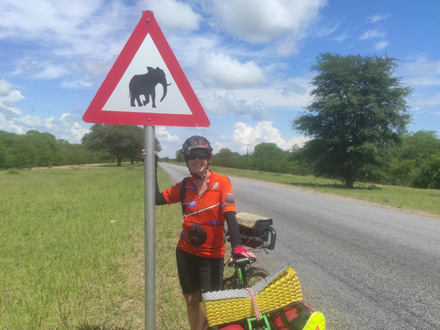
There is even a guest house where elephants roam freely among the chalets right in front of the bar: Elephant Sands Lodge.

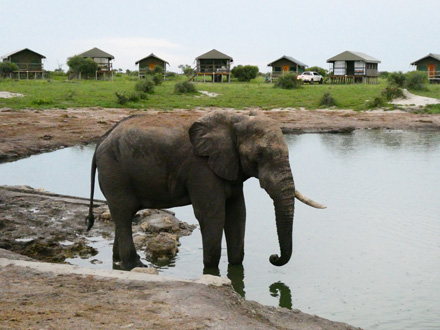
So, what should a cyclist do when confronted with one of these mega seven-tonne creatures? Well, in India we were told to “be afraid!” In Zimbabwe, we were advised to “run!”, while in Botswana the guidance is to “keep your distance!”
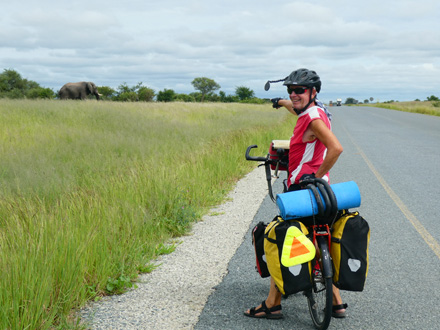
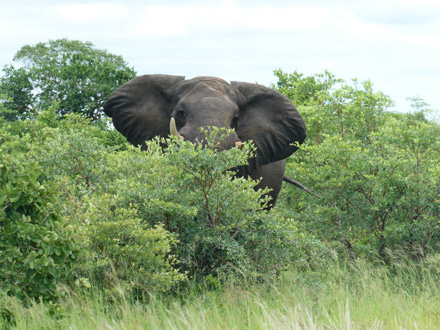
And how did we fare? As it happened, local wisdom came out tops. That was until one bull elephant got stroppy and started a mini charge in our direction! Boy did we skedaddle … breaking all known records in the process! Were we afraid? Let’s say it was the adrenaline kick of year!

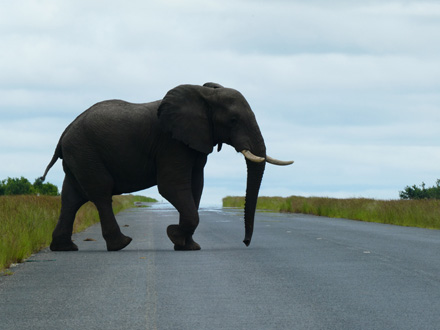
Accommodation
Warning signs for elephants and wildlife in general were the order of the day, so we played it safe and stayed at lodges or enclosures with an elephant-proof fence on the “Elephant Highway”.

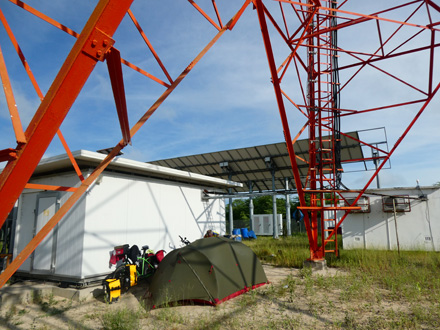
And when the elephants petered out, there were lots of birds to provide distraction on the bullet-straight road north.

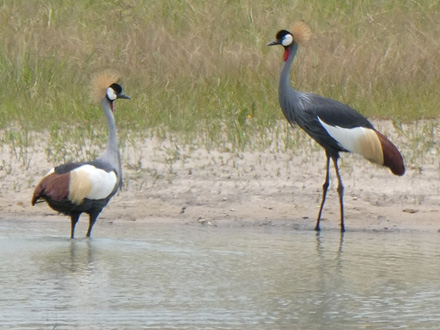
Chobe NP rocks!
Just in case we hadn’t encountered enough elephants on the road, Chobe National Park offered us an opportunity to observe them from the safety of a safari jeep and a wee boat. And to keep the elephants company, Chobe is also home to hippos, buffalos, giraffes, lions, leopards and crocodiles to name a few. We loved the place!


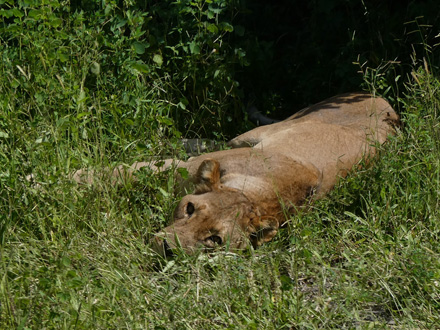
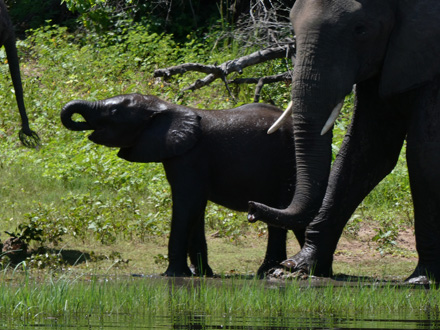
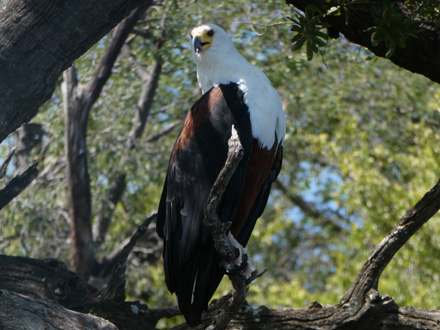
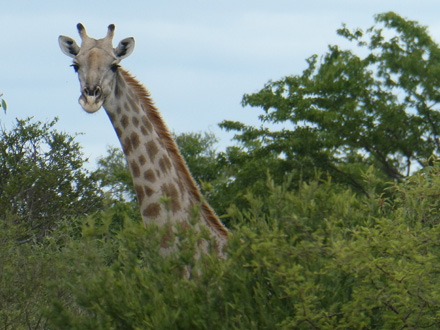
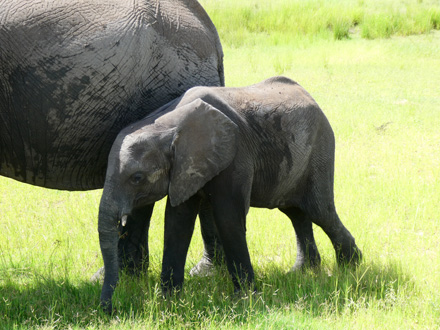
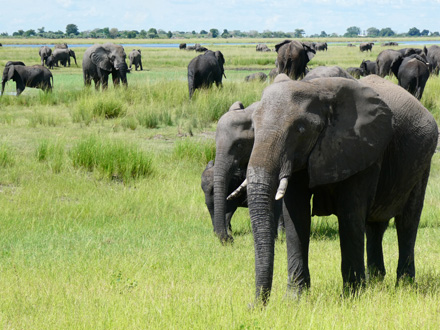
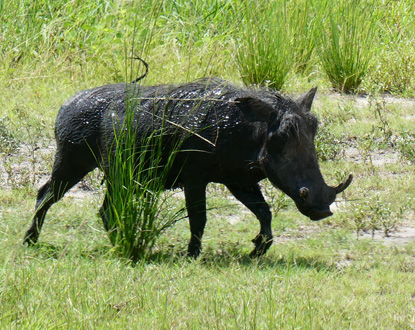
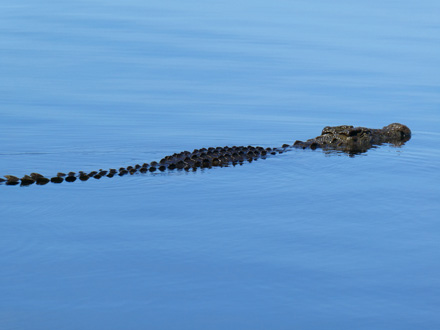
Cyclists
Botswana had not only the highest concentration of elephants, but also cyclists! We enjoyed exchanging stories with Johann from South Africa northbound to Kiliminjaro (@barefootmagicman), Kaco from Chile, northbound to Malawi (@kacomunoz.viajes) and Calixte and Aurélien from France southbound to Capetown on their trikes (@letstrike).
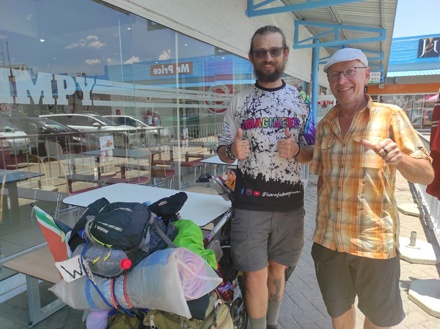
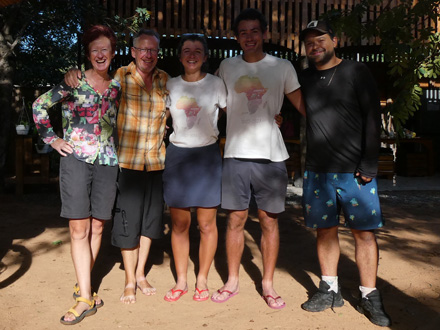
Where four countries meet
Kasane, our last town in Botswana is an interesting spot where Botswana meets Zimbabwe, Zambia and Namibia, the Chobe and Zambezi Rivers acting as borders. While our trip into Botswana was well worth the detour, we were “all elephanted out” by the time we hit Kasane and looking forward to the Zambezi River and Victoria Falls. Tune in for more in the next update.
